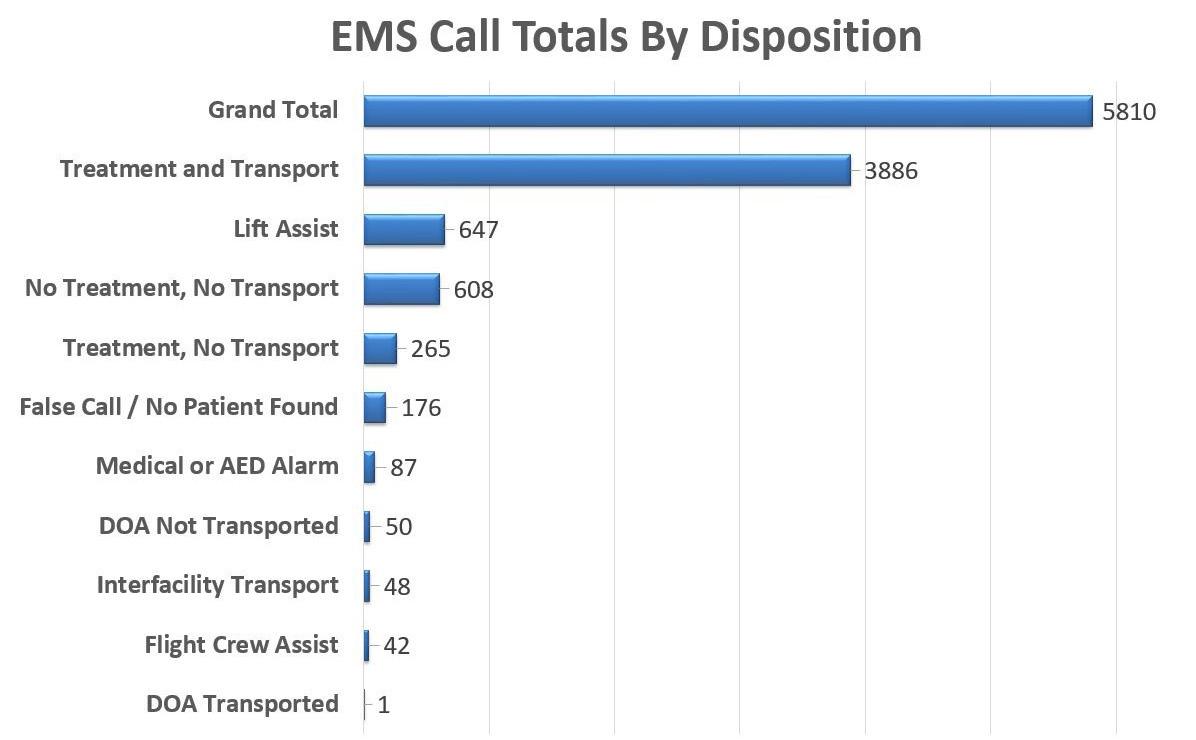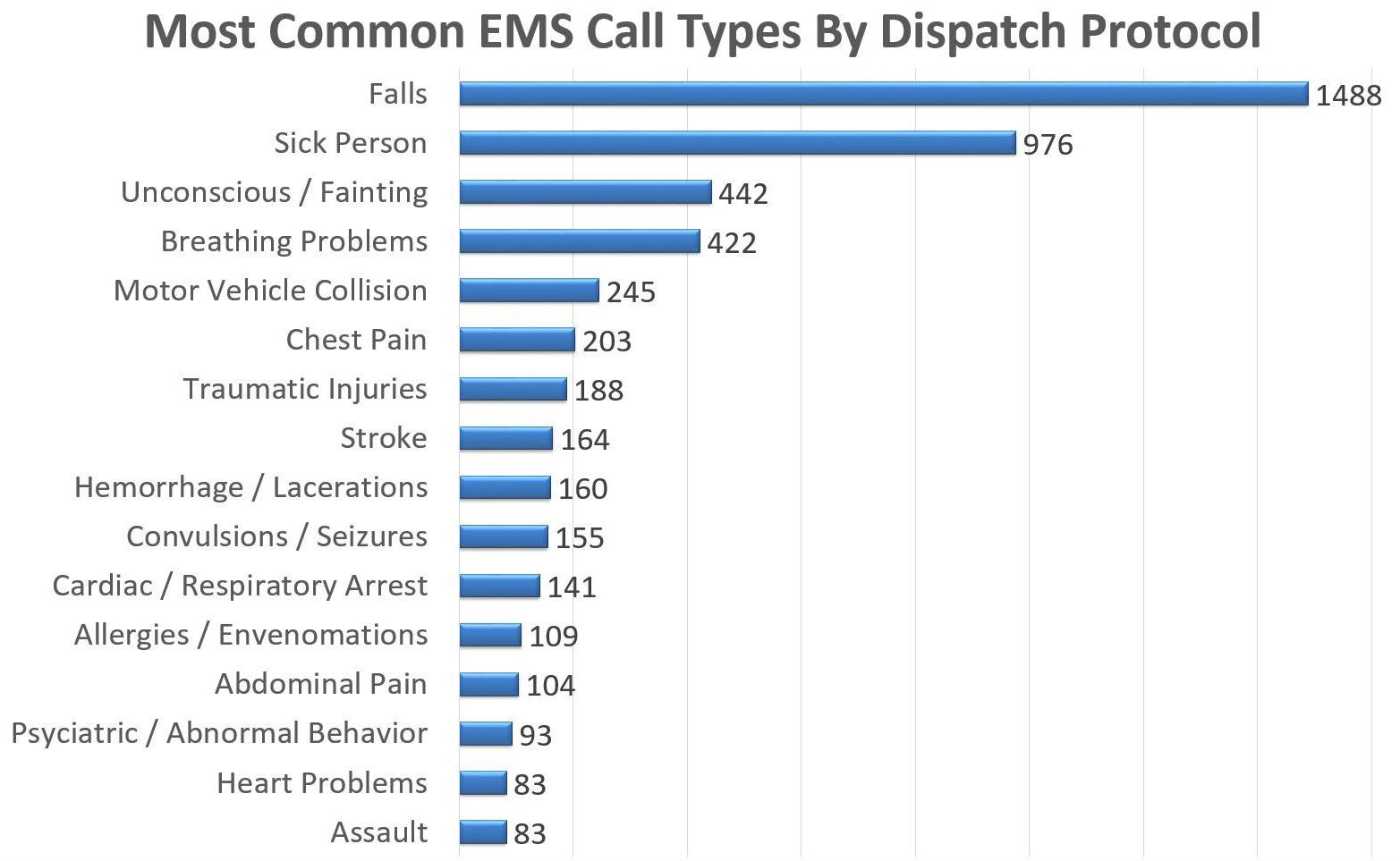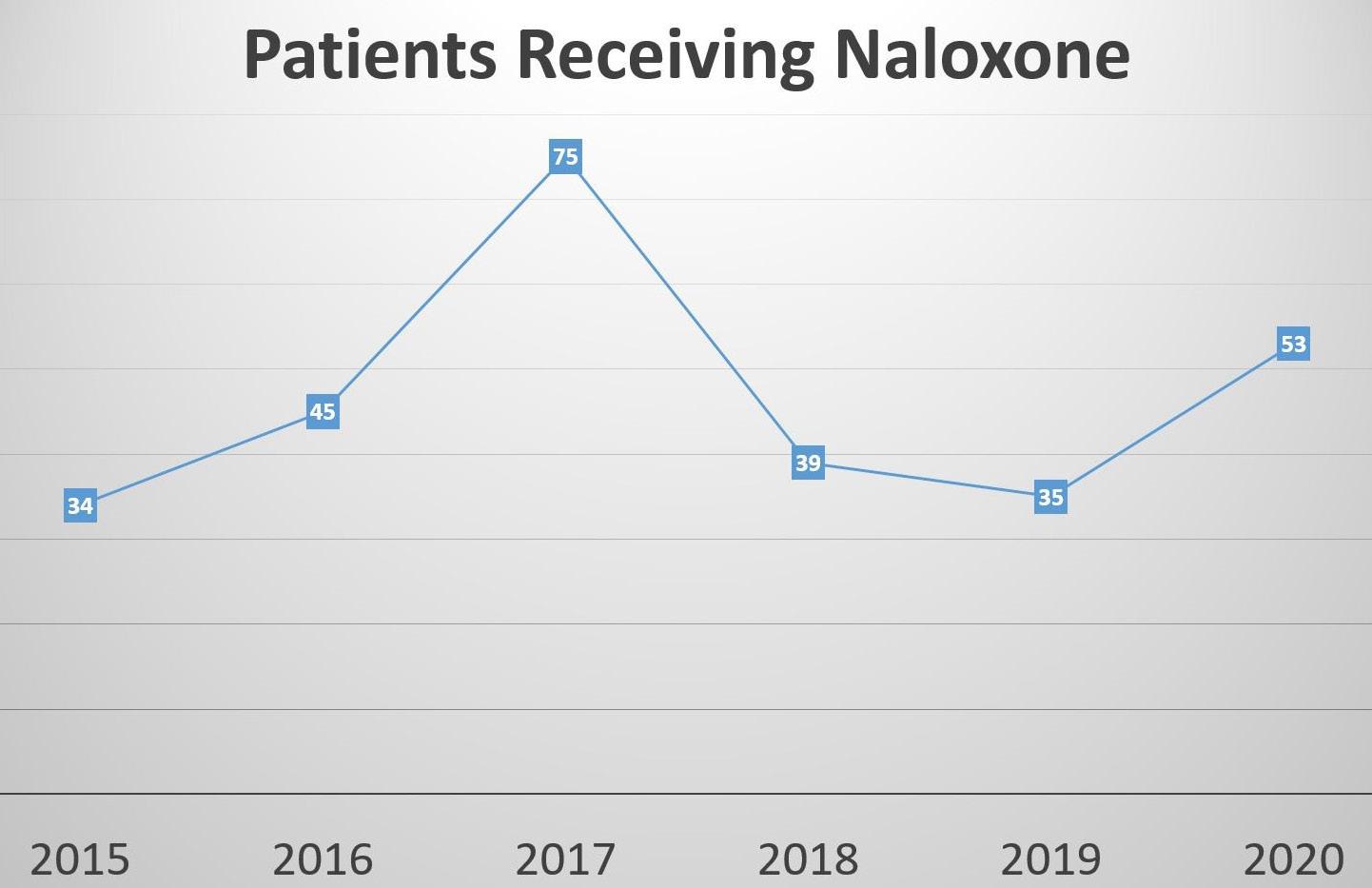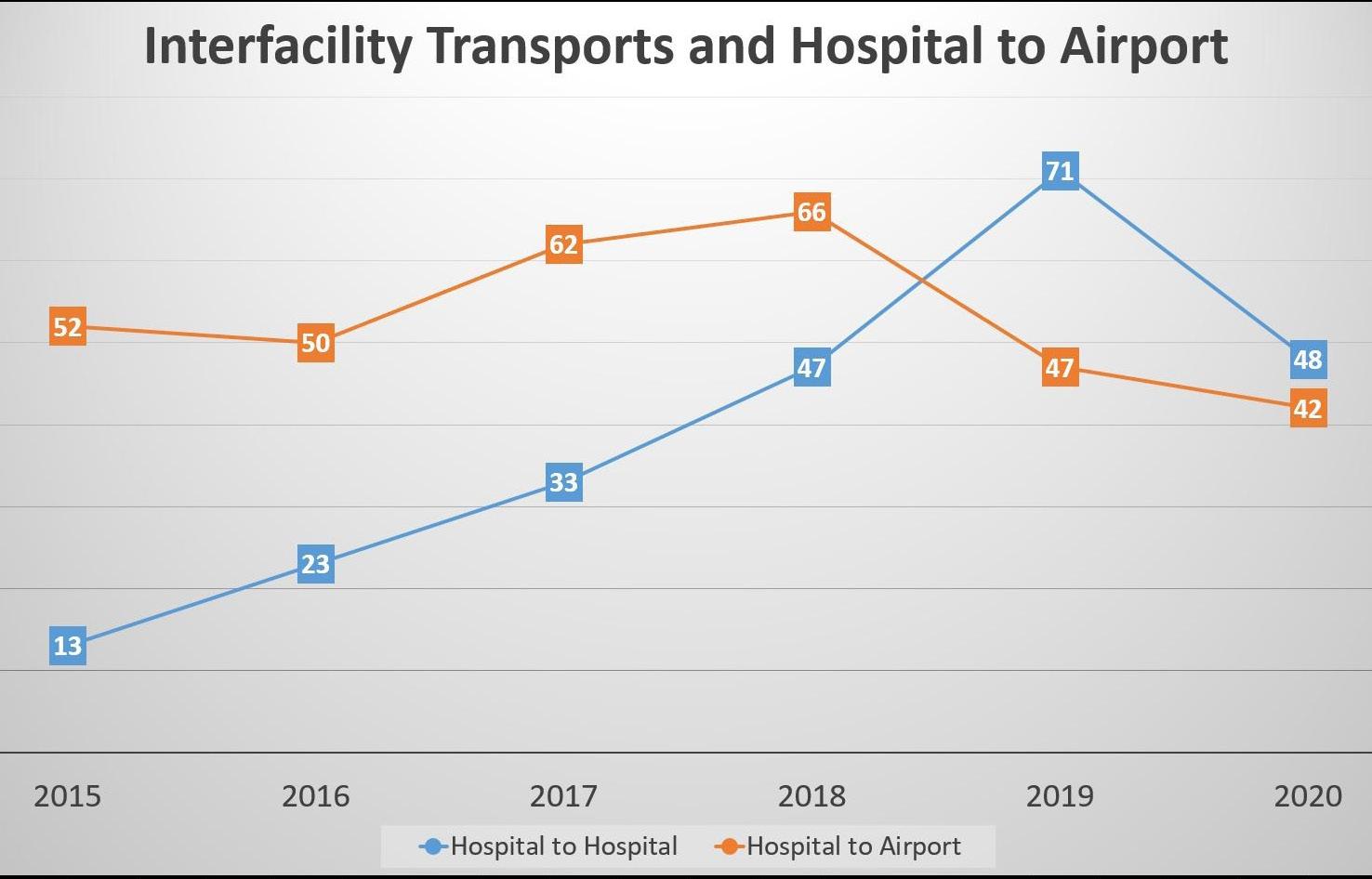
2 minute read
Emergency Medical Services
Battalion Chief Tom Bouthillet
THE COVID-19 PANDEMIC
The COVID-19 pandemic placed EMS operations into a defensive posture for the majority of 2020. Our policies and procedures had to adapt so that we could continue to provide clinically excellent care in a manner that kept our EMTs and paramedics safe. These adaptations included: • Continuing education for Fire Rescue staff on emerging infectious diseases including the role of vaccination • Employee screening including temperature checks to identify presymptomatic cases • Additional patient screening questions in our 9-1-1 communications center • Different levels of personal protective equipment depending on call type • Donning and doffing procedures to minimize risk of infection • Decontamination of equipment, ambulances, fire stations, and personnel • Tracking of aerosolized procedures and exposures • Quarantine, isolation, testing, and return-to-work protocols • Creating a 30-hour online EMT and Paramedic Refresher program so that staff can re-certify remotely • Supporting community COVID testing at Hilton Head Hospital • Partnering with Hilton Head Hospital to ensure EMTs and paramedics were included in Phase 1A of the vaccine rollout These procedures were developed in partnership with high performing EMS systems in the United States including our friends from the Seattle / King County Resuscitation Academy. They were reviewed by an epidemiologist who determined that we were operating at the highest possible standard to keep our employees and our community safe. We are extremely proud of the men and women of Hilton Head Island Fire Rescue who continue to serve our citizens and visitors during this uncertain time with courage, compassion, and commitment.

EMERGENCY MEDICAL SERVICES +
OPIOID EPIDEMIC
With so much attention on the global pandemic it’s easy to forget that we are also dealing with a concurrent opioid epidemic. More than 40 states have reported an increase in overdose deaths, mostly driven by illicitly manufactured fentanyl, along with ongoing concerns related to mental illness and substance use disorder.
Locally, after 2 consecutive years of decline, we saw an increase in the number of times our paramedics administered the drug naloxone.
To help address this issue the U.S. Substance Abuse and Mental Health Services Administration and U.S. Drug Enforcement Administration have provided increased flexibility for providing buprenorphine and methadone to patients with opioid use disorder following a telephone evaluation. There is no magic bullet but Fire Rescue will continue to work with community partners and, when possible, connect patients with available health resources.

INTERFACILITY TRANSPORTS

After identifying a 5-fold increase in the number of interfacility transports (hospital to hospital) from 2015 to 2019 the Leadership Team at Fire Rescue reached out to Hilton Head Hospital to express our concerns related to the high acuity level of some of these patients, the amount of time our front line ambulances are spending off the island, and the fact that these transports often have the effect of shutting down an engine company for several hours. Hilton Head Hospital has been receptive to these concerns and we are formalizing a memorandum of understanding between the two organizations to help clarify expectations related to the use of private ambulance companies when appropriate and minimize patient safety events by ensuring the appropriate level of critical care for select patients when indicated.










